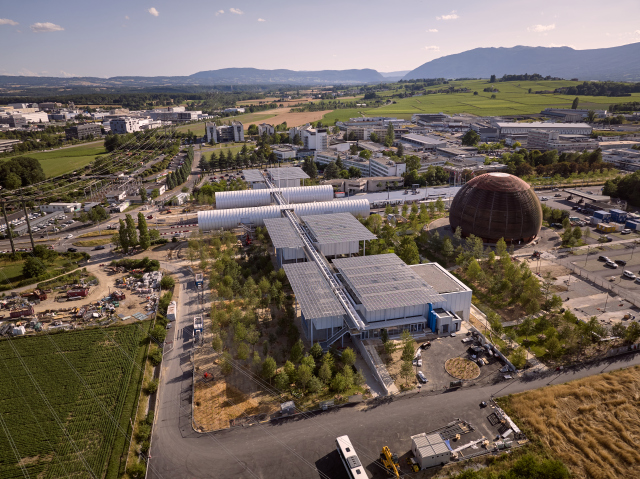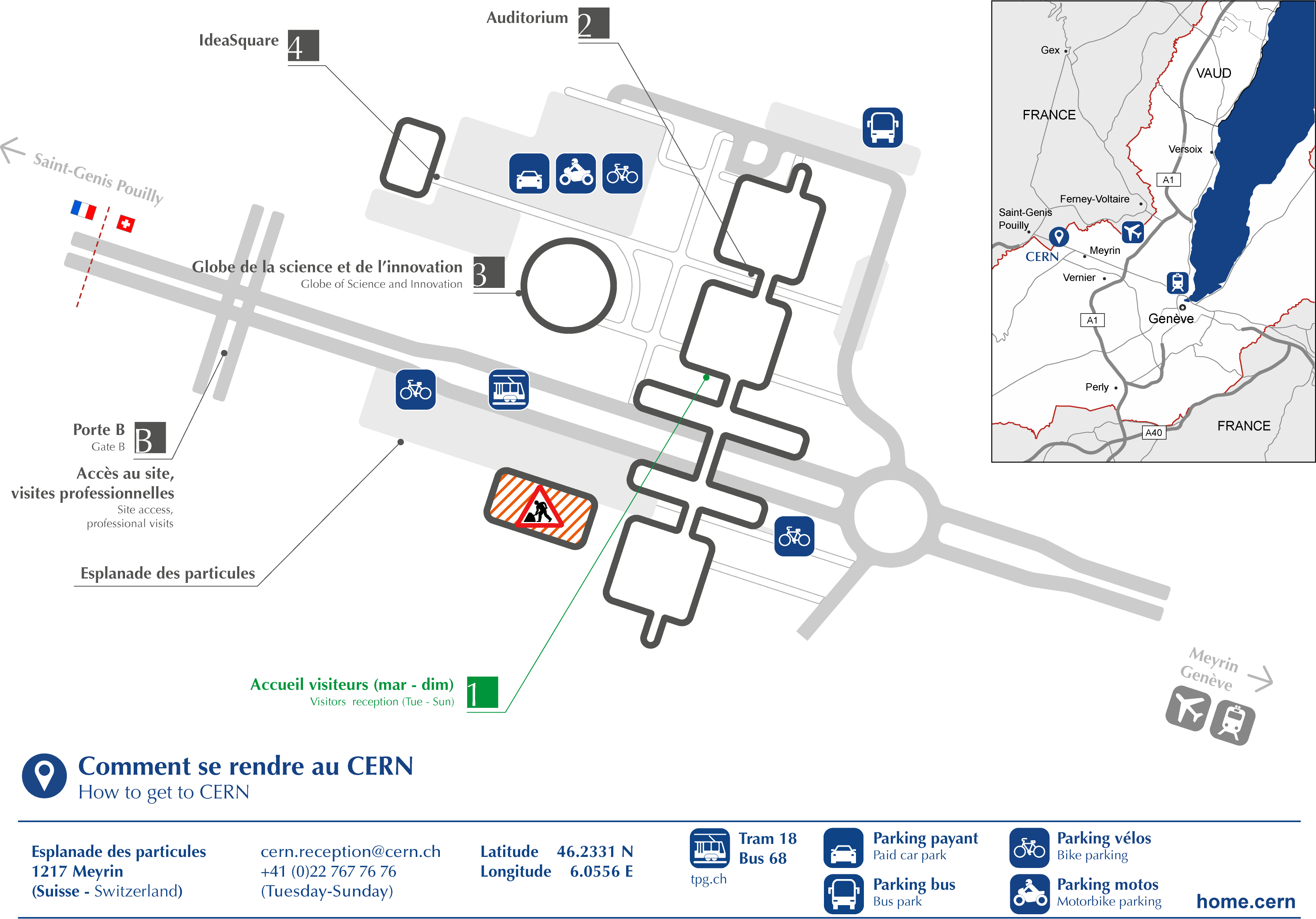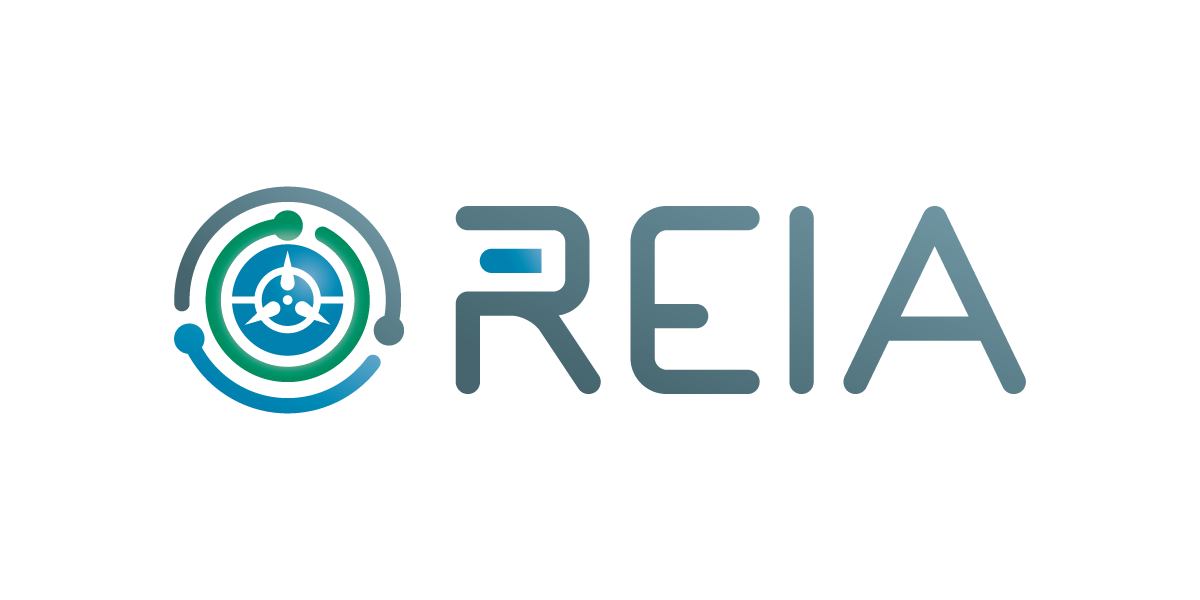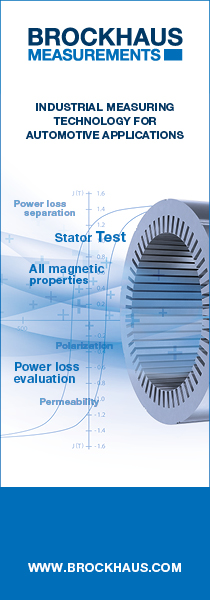Magnetic Materials and Applications 2024 @ CERN
UKMagSoc
MMA24@CERN
Oct 22nd 2024 - Oct 24th 2024
Geneva, Switzerland
Updated 1.11.24
Remember you will need your passport and visas for both Switzerland and France
WELCOME
This event will cover a wide range of magnetic materials research and applications:

It will include two days at the CERN Science Gateway along with another days of networking and tours. The delegate fee includes entry to the seminar at the CERN Science Gateway, reception, informal dinner, exhibition of suppliers, and tours of both CERN and the Magnetics Labs at CERN.
PROGRAMME
In outline the draft programme will consist of:
- 21 October – Evening – informal gatherings for those arriving the day before
- 22 October – Full Day – Technical Seminar Day 1, general tours of CERN, reception and dinner
- 23 October – Full Day – Technical Seminar Day 2, general tours of CERN, reception
- 24 October – Morning – Tours of CERN Magnetics Labs, informal networking at CERN Science Gateway
SPEAKERS INCLUDE
- Bomatec, Philippe Scheuber and Mike Königs – Optimal Segmentation of Permanent Magnets for Electric Drives
- Bunting Magnetics Europe, Chris Riley – High Field Post Assembly Magnetising Systems – From Prototype to Volume Manufacturing
- CERN, Mike Lamont – CERN’s Scientific Programme and the Pivotal Role of Magnet Technology
- Eindhoven University, Mitrofan Curti – Distinct Modelling Approaches to Static and Dynamic Field Modelling Applied to Electrical Machines
- Fraunhofer Institute for Integrated Circuits IIS, Philip Beran – Smart Sensor Systems using Intelligent Technologies for the Implementation of Sophisticated Applications
- IMDEA Nanociencia, Ester M Palmero – Tailored Composites with Permanent Magnet Properties for Fabricating Hard Magnetic 3D Objects by Extrusion – and Stereolithography-Based Additive Manufacturing
- INRIM, Massimo Pasquale – Metrology for Magnetic Laminations and Power Electronics Cores: Loss measurement Techniques and uncertainties from DC to the microwave regime.
- Integrated Engineering Software, Doug Craigen – Hovering Steel Over a Permanent Magnet: A Design and Optimization Case Study
- Magcam, Koen Vervaeke – Looking Inside Magnets Using Magnetic Field Cameras and Advanced Data Analysis
- Magway, Rupert Cruise – Wakey-Shakey: An Innovative Power-On Self-Test for Magway’s Discontinuous Linear Motors
- Max Baermann, Thomas Schliesch – Innovative Permanent Magnets Made by Injection Molding
- Melexis Technologies, Gaël Close – An Integrated MEMS Magnetic Gradiometer
- Metis, Luc Van Bockstal – The HyMPulse: an open-loop pulsed field permeameter for testing of advanced permanent magnets
- Metrolab Technology, Julien Songeon – Advancing Magnetic Measurements: Integrating NMR Measurements with Simulation Software for Predictive Analysis
- NPL, Stuart Harmon – Development of International Standards for Permanent Magnet Measurements
- PTB, Franziska Weickert – Primary Tesla Standards and Magnetic Calibration Chains
- Porto University, André Pereira – Exploring Market Opportunities in Magnetic Materials for Safety: From Non-Destructive Testing of Critical Assets to Electromagnetic Shielding
- SENIS, Dragana Popovic Renella – Innovations in Magnetic Field and Electric Current Measurement Based on SENIS’s Advanced Hall Sensor Technology
- Silicon Austria Labs, Michael Ortner – Simulation of Magnetic Position Sensor Systems and the Magnetization Process
- VACUUMSCHMELZE, Michael Weickhmann – Rare Earth Permanent Magnets for Beam Guiding Applications
VENUE
 The seminar will be held in the CERN Science Gateway, near the ATLAS experiment.
The seminar will be held in the CERN Science Gateway, near the ATLAS experiment.
1, Esplanade des Particules
1217 Meyrin
Switzerland
CERN
“CERN is the European laboratory for particle physics and one of the world’s leading scientific research laboratories. CERN’s business is pure research – physicists and engineers use the world’s largest and most complex scientific instruments to study Nature’s tiniest building blocks, the fundamental particles, to find out how our world and the Universe work.” – CERN website
CERN is a collection of laboratories utilising the Large Hadron Collider (LHC), other synchrotrons, and detectors.
“The LHC is the most powerful particle accelerator ever built. The accelerator sits in a tunnel 100 metres underground at CERN, the European Organization for Nuclear Research, on the France – Switzerland border near Geneva, Switzerland.
“The LHC is a particle accelerator that pushes protons or ions to near the speed of light. It consists of a 27 km ring of superconducting magnets with a number of accelerating structures that boost the energy of the particles.” – CERN FAQ
|
Quantity
|
Number
|
|
Circumference
Dipole operating temperature
Number of magnets *
Number of main dipoles
Number of main quadrupoles
Number of RF cavities
Nominal energy, protons
Nominal energy, ions
Nominal energy, protons collisions
No. of bunches per proton beam
No. of protons per bunch (at start)
Number of turns per second
Number of collisions per second
|
26 659 m
1.9 K (-271.3°C)
9593
1232
392
8 per beam
6.5 TeV
2.56 TeV/u (energy per nucleon)
13 TeV
2808
1.2 x 1011
11245
1 billion
|
* That’s a lot of magnets – which is why we’re going :0)
ACCOMMODATION
Novotel Geneva Centre
Rue de Zurich 19, 1201
GENEVA, Switzerland
We have reserved 60 Double B&B rooms for the rate of CHF 220.00 per night from Mon 21 Oct – Thursday 24 Oct. This offer will expire on 21 Sep 24.
To book a room, please scan the QR code, or visit the hotel website here where you will need to click on Special Rates and enter SPE3 into the preference rate box.

TRAVEL
Visa
Please be aware you will need permission to travel in both France and Switzerland; there are border checkpoints on the CERN site, and there are occasional passport checks.
It is your responsoibiltiy to have any necessary visas for travel in both France and Switzerland.
Getting to Geneva
By air the closest airport is Geneva
By train the closest station is Geneva Cornavin
Getting to CERN
Directions to CERN Science Gateway can be found on their website.
A google map can be found here.

Public transport
- Bus from France : take bus 68 or bus 67 (direction: Blandonnet). There is a bus stop at the entrance to CERN.
- Tram from Geneva : take tram 18 and get off at the last stop (”CERN”). If you are staying at a hotel in Geneva, it may offer free public transport cards.
Car
- A paid car park is located behind the Globe of Science and Innovation. Please note that parking is allowed only for the duration of your visit. Parking outside the car park is forbidden and vehicles parked illegally may be fined by local authorities.
- Click here for more information on parking rates and rules.
- If this car park is full, an alternative paid car park is available by the French customs at the Centre sportif de Maisonnex.
DINNER TRANSPORT
A bus will be organised for travel between CERN and the Chateau for dinner on the 22 Oct 24.
DIETARY REQUIREMENTS
Please let us know as soon as possible if you have any dietary requirements we need to be aware of.
DRESS CODE
The dress code for the event is business attire / smart casual.
CONTINUING CONTACT / GDPR
Please note, by providing contact details during registration, you authorise us to
- use these contact details to let you know details of this event, and
- add your contact details to our contact database to let you know about future events that may be of interest.
Please let us know at enquiries@ukmagsoc.org at any time if you do not wish to be contacted in this way. Also, we can remove you from our contact schedule at any point in the future.
We will also be taking photos at the event. If you do not wish to have your photo taken during the event, please contact events@ukmagsoc.org
SPONSOR PACKAGES
As of 24 June 2024 our exhibiting space is full.
Sponsor packages are still available at a reduced rate, but without exhibiting space. They are still an excellent way to promote your organisation!
Note sponsorship does not guarantee a speaking slot.
- Ferrite Sponsor: 2 attendees, Logo and link on our marketing material, Listed on our presentations
- Samarium Sponsor: as Ferrite + 3 attendees in total, 1 item of promotional material or USB or advert included in delegate pack and available at Registration, Thanked during session introduction and closing comments, Pop-up banner displayed at Registration – Only 3 available
- Neodymium Sponsor: as Samarium + 4 attendees in total, Advert shown during breaks, Logo on delegate badges, Sponsorship of MMA24 Dinner, MMA24 title sponsorship – Only 1 available
We thank our Sponsors
Lab Tour Sponsors

Partners Event Sponsors
Event Sponsors



Speakers
Hovering Steel Over a Permanent Magnet: A Design and Optimization Case Study
by Doug Craigen of Integrated Engineering Software
Recent benchmarking of simulated magnetic force distributions led to the observation of configurations where there was static repulsion between steel and a permanent magnet. The presentation will demonstrate how this idea was explored with simulation to learn more about how works, which then guided further simulation, which enabled much stronger repulsion devices than initially predicted. This is a case study in ways that simulation enhances design besides simply replacing physical prototyping. Some fun desktop toys that resulted from the study will be demonstrated.
You must be a member to download papers. Membership Information...
Simulation of magnetic position sensor systems and the magnetization process.
by Michael Ortner of Silicon Austria Labs
Magnetic position sensor systems infer the relative position and orientation between a magnet and a magnetic field sensor from the sensor output. Currently, over 50% of global sensor production is dedicated to these applications. In my presentation, I will discuss the modeling of such sensor systems, with an emphasis on the permanent magnets and the challenges arising from inhomogeneous magnetizations due to the magnetization process.
You must be a member to download papers. Membership Information...
Exploring Market Opportunities in Magnetic Materials for Safety: From Non-Destructive Testing of Critical Assets to Electromagnetic Shielding
by André Pereira of Faculty of Sciences of Porto University – IFIMUP
The demand for enhanced safety measures in various industries has propelled the market for magnetic materials into a period of unprecedented growth. This presentation, titled delves into the lucrative prospects within this dynamic sector. We will explore how magnetic materials are revolutionizing safety protocols through advanced non-destructive testing (NDT) techniques, ensuring the integrity and longevity of critical infrastructure.
As electromagnetic interference (EMI) from electronic devices continues to proliferate, the need for effective shielding solutions becomes critical, particularly in protecting human health. Textiles with embedded magnetic materials offer a versatile and practical approach to EMI shielding, providing both protection and comfort. This discussion will highlight the growing market potential for these advanced textiles in personal health protection, workplace safety, and everyday consumer products. By examining current market trends, technological advancements, and investment opportunities, we aim to provide industry stakeholders with insights into leveraging these innovations to enhance health protection, drive market growth, and achieve competitive advantage. Join us to discover how magnetic materials in textiles are set to revolutionize safety and health protection.
Innovations in Magnetic Field and Electric Current Measurement Based on SENIS’s Advanced Hall Sensor Technology
by Dragana Popovic Renella of SENIS Group, Switzerland
Pioneering advancements in magnetic field and electric current measurement are introduced, emphasizing SENIS’s advanced Hall sensor technology. Key applications, such as those at CERN, demonstrate the significance of these state-of-the-art devices. SENIS's vertical and horizontal Hall sensors lead the industry in magnetic field sensing, featuring a patented vertical Hall sensor with an exceptional noise voltage spectral density of 0.8 μV/√Hz at 1 kHz, offering an unparalleled signal-to-noise ratio. By integrating these sensors within CMOS technology, versatile 3D Hall sensors have been developed. The SENIS Low Noise Teslameter, equipped with the world’s smallest 3D Hall probe, delivers high-resolution, temperature-stable measurements. Additionally, the K3A cryogenic low-noise transducer operates at temperatures as low as 1 K, providing accurate measurements in confined spaces. Revolutionary tools like the SENIS 3D magnetic field mapper and SEN-3D-CAM camera offer high-precision field mapping and imaging. SENIS sensors and instruments are critical for precise, reliable measurements in advanced applications.
You must be a member to download papers. Membership Information...
High Field Post Assembly Magnetising Systems – From Prototype to Volume Manufacturing
by Chris Riley of Bunting Magnetics Europe Ltd
The presentation will take a detailed look at the key considerations for the design of rare earth magnet post assembly magnetising systems for volume manufacturing of magnetic assemblies. This will include the challenges of achieving and monitoring saturation in the magnets, as well as extreme mechanical and thermal issues that occur because of the high magnetic fields in the windings and must be managed to achieve acceptable manufacturing cycle times. The downstream advantages of this process will be highlighted.
You must be a member to download papers. Membership Information...
Advancing Magnetic Measurements: Integrating NMR Measurements with Simulation Software for Predictive Analysis
by Julien Songeon of Metrolab Technology SA
Nuclear Magnetic Resonance (NMR) is an essential technique for investigating the magnetic properties of materials at the atomic scale. In this presentation, we present a comprehensive methodology of the application of advanced NMR measurement techniques for magnetometry with a custom-developed simulation software. By simulating potential measurement outcomes prior to experimental measurements, this tool provides a predictive capability that facilitates more informed decision-making and enhances the planning of experimental procedures. The presentation will encompass the precise methodologies employed in NMR magnetometry, the development and features of the simulation software, and illustrative case studies that highlight its practical application. This integrated approach not only deepens the understanding of the magnetometry instruments we develop but also equips users with the ability to predict measurement outcomes, thereby promoting more efficient and accurate scientific investigations.
You must be a member to download papers. Membership Information...
Optimal Segmentation of Permanent Magnets for Electric Drives
by Philippe Scheuber and Mike Königs of Bomatec AG
To reduce the reliance on heavy rare earth elements in electric drives, OEMs are intensifying efforts to understand and mitigate eddy currents and therefore improve the segmentation of magnets. This presentation proposes and demonstrates optimization procedures from both technical and economic perspectives. Technically, we focus on optimal segmentation methods to reduce eddy currents, while economically, we aim to achieve the optimal cost-to-performance ratio.
You must be a member to download papers. Membership Information...
Distinct modelling approaches to static and dynamic field modelling applied to electrical machines
by Mitrofan Curti of Eindhoven University of Technology (TU/e)
With this presentation we will explore the latest advancements in static and dynamic field modelling for electric machines and other magnetic components, driven by the increasing operating frequencies of power electronics and the need for more accurate iron loss estimation. Significant advantages that higher-order finite elements offer in AC simulations and hysteresis modelling will be demonstrated. Special emphasis will be placed on the critical role of coupled electric and magnetic simulations which requires full Maxwell’s equations, to accurately account for the resistive, inductive, and capacitive effects in windings. Drawing from recent research, we will demonstrate how leveraging symmetries and invariances in winding geometries can simplify these models without compromising accuracy with respect to measurements. This approach not only enhances computational efficiency but also ensures precise simulation outcomes, paving the way for more robust and reliable electromagnetic designs.
You must be a member to download papers. Membership Information...
Looking inside magnets using magnetic field cameras and advanced data analysis
by Koen Vervaeke of Magcam
Magcam specializes in advanced quality control and characterization of permanent magnets and magnet assemblies using a powerful combination of magnetic field camera technology and proprietary data analysis software, aiming at extracting a maximum of information out of measured high resolution magnetic field distributions. This combination has resulted in many useful solutions to high end customer applications, ranging from optimizing the performance of permanent magnet race car motor/generators, over 100% production quality assurance of automotive magnetic position sensor systems, to selection of optimal miniature magnets for Swiss wrist watches. Even within the world of electric drives, different magnet applications require different measurement and data analysis strategies in order to get a consistent high quality end product. We present some spectacular examples of how different aspects of magnet quality are characterized for different end applications.
Developing International standards for design and modelling, materials manufacture, in-service and end-of-life
by Stuart Harmon of NPL
With the push towards a net zero carbon economy and the development of clean technology supply chains, electrification technologies, including power electronics machines and drives (PEMD), require significant underpinning metrology to give precise, reliable data at conditions representative of the operational conditions of use.
The starting point for material supply chains is the range of IEC 60404 standards for magnetic materials, but increasingly, researchers, design & modelling and end users require more robust data.
This presentation will outline the traceability routes NPL develops and disseminates to bridge the gap from the IEC standards to real-world applications, ensuring greater confidence in performance for industry.
You must be a member to download papers. Membership Information...
The HyMPulse: an open-loop pulsed field permeameter for testing of advanced permanent magnets
by Luc Van Bockstal of Metis Instruments, Belgium
The HyMPulse, an open-loop pulsed field magnetometer, is used for quality control of magnetic properties. Its accurate and repeatable measurements are the basis for worldwide acceptance. The capability to measure quickly a variety of sample shapes and sizes is an added bonus.
In the HyMPulse, a Helmholtz-type coil is used as a basis for the measurement of the magnetic response of the sample. It therefore relates to simple standards.
Linking the open-loop with closed-loop measurements is important to correlate with classical BH curves. Besides geometry effects, the instrument can also be used to analyze other properties: examples show the capability to assess losses due to eddy currents and to determine initial saturation and demagnetization of partially saturated samples.
Tailored composites with permanent magnet properties for fabricating hard magnetic 3D objects by extrusion- and stereolithography-based additive manufacturing
by Ester M. Palmero of IMDEA Nanociencia
Additive manufacturing is attracting much interest in high-tech sectors, such as energy, transport, aerospace or medicine, for fabricating high-performance objects with complex shapes, tuned properties and minimal waste generation. For developing permanent magnets through these technologies, the challenge is to fabricate them with a high filling factor, while avoiding the deterioration of the magnetic properties during their fabrication and processing.
Along this talk, the last results that we have obtained about the fabrication of hard magnetic objects using rare earth-free (Mn-Al-C and Sr-ferrite) and rare earth-based (Nd-Fe-B) particles embedded in polymer, inks and resin by extrusion- and stereolithography-based additive manufacturing will be shown. The effect of key parameters such as particle size and its distribution and the use of additives in the composite synthesis on the printability and particle load of the printed parts will be analyzed. Moreover, the possibility of enhancing the permanent magnet properties of nanostructured Sr-ferrite powder by recycling the residue generated in the fabrication of commercial ferrite magnets, and then using it for fabricating hard magnetic objects by 3D-printing will be demonstrated.
The combination of the synthesis of composites made of functional nanostructured materials and advanced fabrication technologies shows a novel route for fabricating a new generation of hard magnetic objects with tuned and non-deteriorated magnetic properties.
Metrology for Magnetic Laminations and Power Electronics Cores: Loss measurement Techniques and uncertainties from DC to the microwave regime.
by Massimo Pasquale of INRIM ML Torino
Magnetic laminations and cores for power electronics play a crucial role in modern energy conversion systems, enabling efficient and reliable power transfer. Accurate measurements of the magnetic properties and losses in these laminations and cores is essential for optimal design and performance of motors, transformers and power electronics devices. This work provides an overview of the available international measurement standards, as well as examples of hysteresis loops and power loss figures obtained by broadband measurements on laminations as well as ferrite, nanocrystalline, and amorphous magnetic cores, encompassing different experimental setups and methods. The measurement techniques discussed in this presentation allow, in particular, for dynamic B-H measurement at different induction levels up to the MHz range and also for permeability measurements up to the GHz range. The energy losses are analyzed by the loss separation method, taking into account the eddy current and spin damping dissipation mechanism, besides the magnetic flux penetration issues. They are posed in direct relationship with the real and imaginary permeability components, by discriminating between domain wall and rotational contributions. Available measurement standards are discussed and the analysis of the measurement uncertainties is provided. Calibration procedures to assess and reduce the uncertainties arising from circuitry, instrument resolution, temperature, and environmental effects are considered. Since the DC-MHz frequency range is particularly relevant for power electronics, the power loss measurement techniques here discussed and the related uncertainties specifically address the challenges associated with this frequency range. Through their comprehension, engineers and researchers involved in the design and optimization of power electronics devices can make well-informed decisions. The insights provided in this presentation may directly contribute to the reduction of uncertainties in power electronics measurements, facilitating the development of more efficient and reliable energy conversion systems.
You must be a member to download papers. Membership Information...
CERN's Scientific Programme and the Pivotal Role of Magnet Technology
by Mike Lamont of CERN
This presentation introduces the cornerstone elements of CERN's scientific agenda and outlines our strategic vision for the future. We will explore the essential functions and innovative applications of magnet technology within CERN's array of projects, sketching how these technologies not only support current scientific endeavors but also shape potential future developments.
Innovative Permanent Magnets Made by Injection Molding
by Thomas Schliesch of Max Baermann GmbH
For injection molded magnets their sometime complex pole shapes and pole patterns can have an
essential impact on their final performance in magnetic sensor applications, electrical machines or
other. This often makes the development of related systems challenging, but on the other hand
opens a wide field of chances to devise new and innovative applications. Also, the large number of
geometric capabilities as well as the easy mechanical combinability of injection molded magnets can
be an advantage to use these magnets in various applications, especially when it comes to high
production rates as it is the case e.g. in automotive industry.
The design and manufacturing of injection molded magnets will be explained by examples both for
magnets used in sensors as well as in electrical machines. Ways to tailor specific pole shapes for
specific behavior of the originated field distributions will be explained in detail. Predicted results
from foregoing simulations will be compared to measurements. Some interesting insights especially
for new sorts of magnetic sensor systems will be discussed also in more detail. Also, different
systems where magnets have been combined with other mechanical parts will be presented.
The design of injection molded magnets by FEM or by analytical as well as semi-analytical methods
will be covered in addition. Multi-sequential FEM methods which include the manufacturing stage
will be explained. These methods are both related to in-mold magnetization as well as to pulse 3 magnetizing processes. But also, general approximations, which can handle a multitude of complicated magnet configurations without considering the specific manufacturing process, will be
discussed.
Primary Tesla Standards and magnetic calibration chains
by Franziska Weickert of Physikalisch – Technische Bundesanstalt (PTB)
In this talk, we will review the current primary Tesla standards of the magnetic flux density B at PTB that is based on nuclear magnetic resonance methods on protons in water samples. They trace B back to a frequency respective time measurement. Furthermore, we describe current efforts of NMR methods with hyperpolarized 3He-gas. 3He has advantages over established methods due to significant longer relaxation times, lower background contributions, and higher nuclear polarization rates. These advantages ultimately lead to reduced measurement uncertainties. Moreover, they help to close a traceability gap above 0.2T that is a long standing issue within the metrology community.
You must be a member to download papers. Membership Information...
Wakey-Shakey: An Innovative Power-On Self-Test for Magway's Discontinuous Linear Motors
by Rupert Cruise of Magway Limited
In the early days of personal computing, IBM's Power-On Self-Test (POST) performed a comprehensive check of all hardware components, including a full memory test. This design was inspired by IBM's larger mainframe systems, which conducted a complete hardware test during their cold-start process. Drawing inspiration from this legacy, Magway has developed its own power-on self-test, affectionately named "Wakey-Shakey."
The distinctive feature of Magway’s discontinuous linear motors and system architecture enables a thorough system test during start-up. This process includes detecting each carriage's position without relying on position sensors, showcasing a significant advancement in the field.
This technical presentation will delve into the details of Magway's innovative approach, highlighting the safety-first methodology that led to the development of "Wakey-Shakey." Attendees will gain insights through a blend of technical information and anecdotal stories, illustrating the journey and challenges faced in achieving this breakthrough.
Magway's innovative power-on self-test sets a new standard in system reliability and safety for autonomous transport applications using magnetic materials.
Smart sensor systems using intelligent technologies for the implementation of sophisticated applications
by Philip Beran of Fraunhofer Institute for Integrated Circuits IIS
Magnetic sensor systems form an important backbone of measurement technology in countless applications. Our research group at the Fraunhofer Institute has been developing magnetic field sensors for over 20 years and has established several intelligent technologies to make the best possible use of the information contained in magnetic fields for sophisticated applications. We show the latest innovations related to our technologies that have been developed to meet the challenges of today and tomorrow. We present our advanced HallinOne 3D magnetic field sensors that can be fully configured to the customer’s needs as well as the technology HallinSight for mapping, visualizing and characterizing magnetic fields. We give a deep insight into the innovative single chip solution “FH6D04” that can be used for multi axis position sensing with our technology HallinMotion as well as for stray field robust current sensing with HallinPower just depending on programming of the system. This has the great advantage that several applications can be implemented with the same chip and at the same time component shortages due to lack of availability can be avoided.
You must be a member to download papers. Membership Information...
Rare Earth Permanent Magnets for Beam Guiding Applications
by Michael Weickhmann of Vacuumschmelze
At Vacuumschmelze (VAC), the world of magnetism is our home. Besides soft magnetic materials and components manufactured from these materials, VAC is producing highest-grade rare earth permanent magnet material since 1973. However, VAC is not just a supplier of high end magnetic materials, but highly specialized on developing customized solutions for the demand of our customers, including the buildup of complex magnet systems.
In this talk we will present recent examples of highly customized solutions for research institutions working with charged particle beams. While many undulators for synchrotron facilities have already employed permanent magnet structures for several decades, the lattice components, i.e. beam guiding applications, are just recently being adopted from resistive magnets to permanent magnet technology. This allows to improve the density of magnetic structures, hence promising greatly reduced emittance as demonstrated by some pioneering projects in the field and further to reduce the energy consumption, avoiding vast heat loads and therefore reduce the complexity of the facility by eliminating or reducing the need for cooling of lattice components.
In this talk we will present recent examples of highly customized solutions for research institutions working with charged particle beams. While many undulators for synchrotron facilities have already employed permanent magnet structures for several decades, the lattice components, i.e. beam guiding applications, are just recently being adopted from resistive magnets to permanent magnet technology. This allows to improve the density of magnetic structures, hence promising greatly reduced emittance as demonstrated by some pioneering projects in the field and further to reduce the energy consumption, avoiding vast heat loads and therefore reduce the complexity of the facility by eliminating or reducing the need for cooling of lattice components.
You must be a member to download papers. Membership Information...
An Integrated MEMS Magnetic Gradiometer
by Gaël Close of Melexis Technologies SA
Due to electrification, magnetic sensors are increasingly deployed in magnetically polluted environments. To reject stray fields, differential sensing schemes are typically used. In this talk, we will present a single-point gradiometric sensing scheme based on the force exerted on a magnet, which is directly related to the magnetic field gradient. Our prototype is the first single-point MEMS gradiometer that can operate unshielded in various orientations. The talk will conclude with an outlook for MEMS-based magnetic sensors.
You must be a member to download papers. Membership Information...
Programme
| Time | Session Title | Session Host |
|---|
| Tues 22 Oct 24 | | |
| 09:00 | Registration opens | |
| 09:45 | Open, introduction to CERN | Graeme Finch, NPL |
| 10:00 | CERN's Scientific Programme and the Pivotal Role of Magnet Technology | Mike Lamont, CERN |
| 10:30 | Innovations in Magnetic Field and Electric Current Measurement Based on SENIS’s Advanced Hall Sensor Technology | Dragana Popovic Renella, SENIS Group, Switzerland |
| 11:00 | Break | |
| 11:30 | Developing International standards for design and modelling, materials manufacture, in-service and end-of-life | Stuart Harmon, NPL |
| 12:00 | Primary Tesla Standards and magnetic calibration chains | Franziska Weickert, Physikalisch – Technische Bundesanstalt (PTB) |
| 12:30 | Lunch | |
| 12:45 | Groups 1 & 2 to Gather in Lower Foyer Entrance for Tour of CERN | |
| 13:00 | CERN TOUR for Groups 1 & 2 | |
| 13:40 | End of CERN TOUR | |
| 14:15 | Metrology for Magnetic Laminations and Power Electronics Cores: Loss measurement Techniques and uncertainties from DC to the microwave regime. | Massimo Pasquale, INRIM ML Torino |
| 14:45 | An Integrated MEMS Magnetic Gradiometer | Gaël Close, Melexis Technologies SA |
| 15:15 | Break | |
| 15:45 | Hovering Steel Over a Permanent Magnet: A Design and Optimization Case Study | Doug Craigen, Integrated Engineering Software |
| 16:15 | Optimal Segmentation of Permanent Magnets for Electric Drives | Mike Königs / Philippe Scheuber, Bomatec AG |
| 16:45 | Close, Groups 3 & 4 to Gather in Lower Foyer Entrance for CERN TOUR | |
| 17:00 | CERN TOUR for Groups 3 & 4 | |
| 17:40 | End of CERN TOUR | |
| 18:00 | Bus for dinner | |
| 18:30 | Drinks Reception at Clos Du Chateau | |
| 19:30 | Dinner at Clos Du Chateau | |
| 22:30 | Bus to Geneva Centre | |
| Day 2 Wed 23 Oct 24 | | |
| 08:00 | Registration opens | |
| 08:45 | Welcome | |
| 09:00 | Exploring Market Opportunities in Magnetic Materials for Safety: From Non-Destructive Testing of Critical Assets to Electromagnetic Shielding | André Pereira, Faculty of Sciences of Porto University – IFIMUP |
| 09:30 | Tailored composites with permanent magnet properties for fabricating hard magnetic 3D objects by extrusion- and stereolithography-based additive manufacturing | Ester Palmero, IMDEA Nanociencia |
| 10:00 | Distinct modelling approaches to static and dynamic field modelling applied to electrical machines | Mitrofan Curti, Eindhoven University of Technology (TUE) |
| 10:30 | Simulation of magnetic position sensor systems and the magnetization process. | Michael Ortner, Silicon Austria Labs |
| 11:00 | Break | |
| 11:30 | Looking inside magnets using magnetic field cameras and advanced data analysis | Koen Vervaeke, Magcam |
| 12:00 | The HyMPulse: an open-loop pulsed field permeameter for testing of advanced permanent magnets | Luc Van Bockstal, Metis Instruments, Belgium |
| 12:30 | Lunch | |
| 12:45 | Groups 5 & 6 Gather in Lower Foyer Entrance for CERN TOUR | |
| 13:00 | CERN TOUR for Groups 5, 6 & 7 | |
| 13:40 | End of CERN TOUR | |
| 14:15 | Advancing Magnetic Measurements: Integrating NMR Measurements with Simulation Software for Predictive Analysis | Julian Songeon, Metrolab Technology SA |
| 14:45 | Innovative Permanent Magnets Made by Injection Molding | Thomas Schliesch, Max Baermann GmbH |
| 15:15 | Break | |
| 15:45 | Smart sensor systems using intelligent technologies for the implementation of sophisticated applications | Philip Beran, Fraunhofer Institute for Integrated Circuits IIS |
| 16:15 | High Field Post Assembly Magnetising Systems – From Prototype to Volume Manufacturing | Chris Riley, Bunting Magnetics Europe Ltd |
| 16:45 | Groups 7 & 8 to Gather in Lower Foyer Entrance for CERN TOUR | |
| 16:45 | | Michael Weickhmann, VACUUMSCHMELZE GmbH |
| 17:15 | Wakey-Shakey: An Innovative Power-On Self-Test for Magway's Discontinuous Linear Motors | Rupert Cruise, Magway Limited |
| 17:45 | | Close |
| 18:00 | End - Informal Networking | |
| | |
| Day 3 - Thurs 24 Oct 24 | | |
| 08:30 | Group 1-4 to gather at Big Bang Cafe | |
| 09:00 | Tour 1 of Magnetic Labs | |
| 11:30 | End of Tour 1 | |
| 11:30 | TBC - Groups 5-8 to gather at Big Bang Cafe | |
| 12:00 | Tour 2 of Magnetic Labs | |
| 14:30 | End of Tour 2 | |
| 15:00 | End of Tours | |
Registration
| Type |
Standard Fee |
Group Discount (3+ delegates) |
| Member (UKMS, IOP, REIA, EMA, DMF, CEMAG, AIMag) (incl Reception and Dinner 22 Oct) |
£695.00 |
10% |
| Non-Member (incl Reception and Dinner 22 Oct) |
£795.00 |
10% |
| Student (incl Reception and Dinner 22 Oct) |
£595.00 |
10% |
| Speaker (incl Reception and Dinner 22 Oct) |
£495.00 |
10% |
| Reception, Wine Tasting, and Dinner, Clos du Château, 22 October |
£195.00 |
10% |
| Ferrite Sponsor - no exhibiting space |
£995.00 |
10% |
| Samarium Sponsor - no exhibiting space |
£2,995.00 |
10% |
| Neodymium Sponsor - no exhibiting space |
£4,995.00 |
10% |
Register to attend this event 
 The seminar will be held in the CERN Science Gateway, near the ATLAS experiment.
The seminar will be held in the CERN Science Gateway, near the ATLAS experiment.










